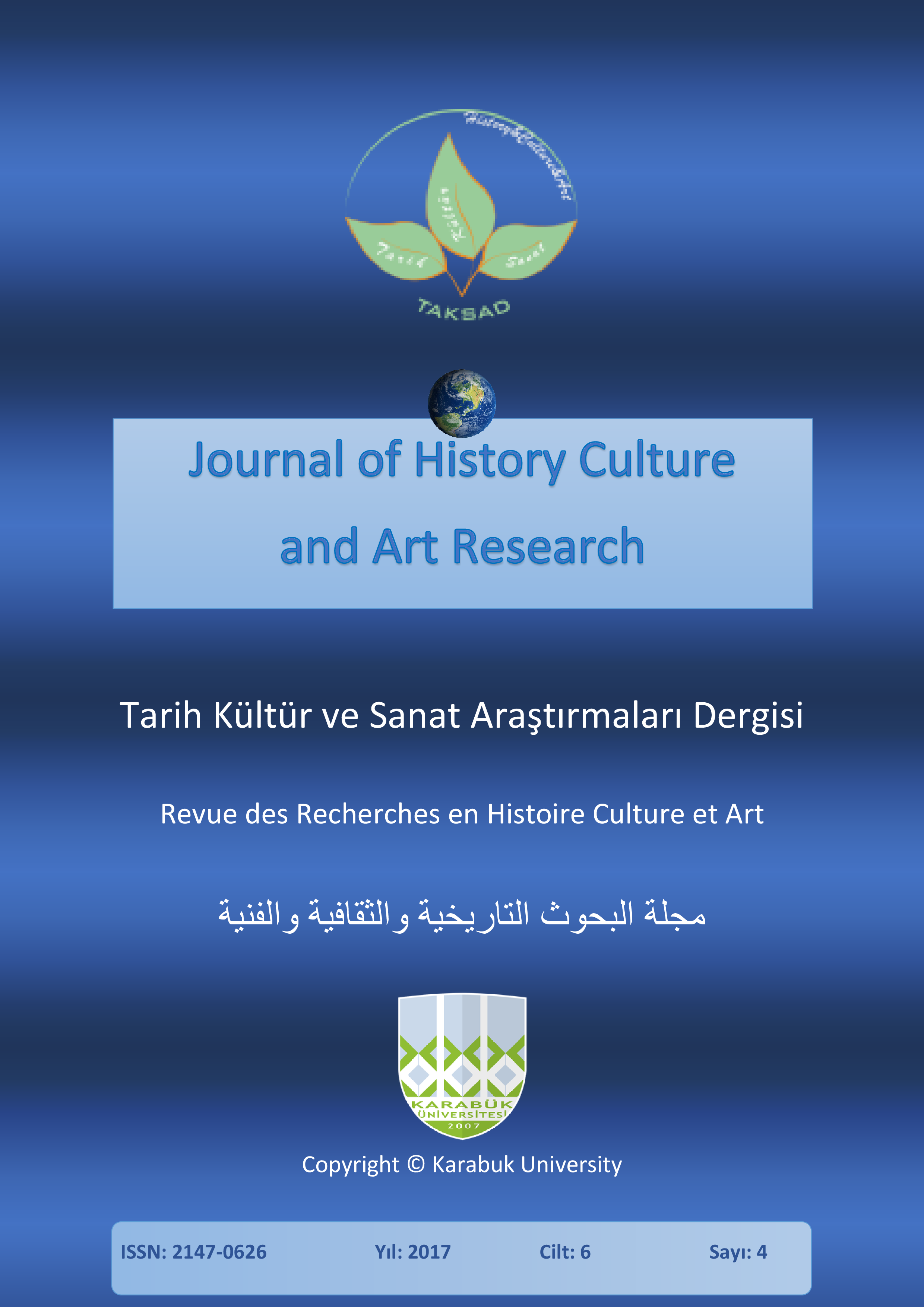Strange Animals and Creatures in Islamic Miniatures: Focusing on Miniatures of the Conference of the Birds
DOI:
https://doi.org/10.7596/taksad.v6i4.1121Keywords:
Miniature, Iranian miniature, Animal, Symbol, The Conference of the Birds.Abstract
Strange animals and creatures have always existed in every mythological culture. In Iran's pre-Islamic and post-Islamic miniatures and reliefs, there are many strange animals and creatures such as dragons and phoenix which were associated with the Iranian culture and civilization. Because of presence of these strange creatures, particularly human life, these creatures are first used in mythological life and then symbolically to express human ideas. However, these animals were present in both mythology and epics and, later in the Islamic era, in the mystical stories, educational stories and admonishing anecdotes like Sanai, Attar, and Rumi. This study tends to investigate genealogy of strange animals and creatures in ancient Iranian reliefs and their continued presence in miniatures of Islamic era as well as presence of these creatures in miniatures which are based on Attar’s Conference of the Birds. In fact, this study reviews elements and symbolic concepts of animals, allowing a deeper understanding of function of elements and symbolism in works of Iranian miniaturists. Contemplation of miniatures, icons and the relationship between literature and miniatures will lead to many results in recognition of mystical intellectual foundations. Therefore, this study tends to investigate mysterious and unknown aspects of Iranian miniatures and find their relationship with culture and stories.
References
Akashe, S. (2001). Islamic miniature. Tehran: Hoze honari publications.
Amid, H. (1984). Amid dictionary. Tehran: Amirkabir.
Amouzegar, Z. (1995). Iran Mythical History. Tehran: Samt.
Binyon, L.; Wilkinson, J. S. & Gray, B. (2004). Persian miniature painting.: Including a critical and descriptive catalogue of the miniatures exhibited at Burlington House. Tehran: Amirkabir.
Chevalier, J. & Gheerbrant, A. (2009). Dictionnaire des Symboles: Mythes, Reves, Coutumes, Gestes, Formes, Figures, Couleurs, Nombres. Tehran: Jeihoon.
Dadvar, A. & Mansouri, E. (2006). Introduction to myths and symbols of ancient iran. Tehran: Kalhor.
Foruzanfar, B. (2010). Description and critical analysis of works of Fariddun Sheikh Mohammed Attar. Tehran: Zavar.
Gholizade, K. (2008). Iranian mythology dictionary. Tehran: Parse.
Grabar, O. (2010). Mostly miniatures: an Introduction to persian painting. Tehran: Talif.
Hall, J. (2001). Illustrated dictionary of symbols in Eastern and Western art. Tehran: Farhang moaser publication.
Hedayat, S. (1977). Neyrangistan. Tehran: S.N.
Hinnells, J. R. (2003). Persian Mythology. Tehran: Ostoureh.
Kazazi, J. (1989). Another form. Tehran: Markaz publications.
Kazazi, J. (2004). Ancient letter. Tehran: Samt.
Khazaei, M. (2007). Symbolic role of peacock in decorative arts of Iran. ketab mah honar, 111-112, 6-12.
Moein, M. (1978). Farsi Dictionary. Tehran: Amirkabir.
Nasr, S. H. (2010). Islamic spirituality & art (2nd ed.). Tehran: Hekmat.
Pakbaz, R. (2007). Encyclopedia of Art. Tehran: Farhang moaser publication.
Pope, A. & Ackerman, P. (1998). Bibliography of Islamic Persian Art to 1938 (A Survey of Persian Art : from Prehistoric Times to the Present). Tehran: Scientific and cultural publications.
Pope, A. U.; Philip, A. & Eric, S. (2001). Masterpieces of Persian art. Tehran: Scientific and cultural publications.
Pourdavood, E. (2001). Ancient Iranian Culture. Tehran: Tehran university publication.
Pourdavood, E. (2015). Avests. Tehran: Negah.
Pournamdarian, T. (2003). Visiting Phoenix (3rd ed.). Tehran: Institute for Humanities and Cultural Studies.
Ravandi, M. (1978). Social history of iran. Tehran: Amirkabir.
Razi, H. (1992). Mithraism. Tehran: Behjat.
Sami, A. (1969). Capitals of the Achaemenid Empire (Susa, Persepolis, Hegmataneh). Tehran: Pahlavi University.
Satari, J. (1999). Research in the story of Sheikh Sanan and the Christian Girl. Tehran: Markaz publications.
Servatian, B. (2002). Birds of the love sahara. Tehran: Ahleghalam.
Soltanigard-Faramarzi, A. (1993). Simurgh in Iranian culture. Tehran: Mobtakeran.
Stronach, D. (2000). Pasargadae: A Report on the Excavations Conducted by the British Institute of Persian Studies from 1961-63. Tehran: Cultural Heritage Organization.
Tousi, M. (1966). The wonders of creation. Tehran: Translation and Publication Firms.
Yahaghi, M. J. (1990). Dictionery of mythology and narratives in Persian literature. Tehran: Farhang moaser publications.
Zarinkoob, A. (2004). Iranian Sufism in its historical perspective. Tehran: Sokhan.
Downloads
Published
How to Cite
Issue
Section
License
All papers licensed under Creative Commons 4.0 CC-BY.- Share — copy and redistribute the material in any medium or format
- Adapt — remix, transform, and build upon the material for any purpose, even commercially.
Under the following terms:
Attribution — You must give appropriate credit, provide a link to the license, and indicate if changes were made. You may do so in any reasonable manner, but not in any way that suggests the licensor endorses you or your use.
- No additional restrictions — You may not apply legal terms or technological measures that legally restrict others from doing anything the license permits.







